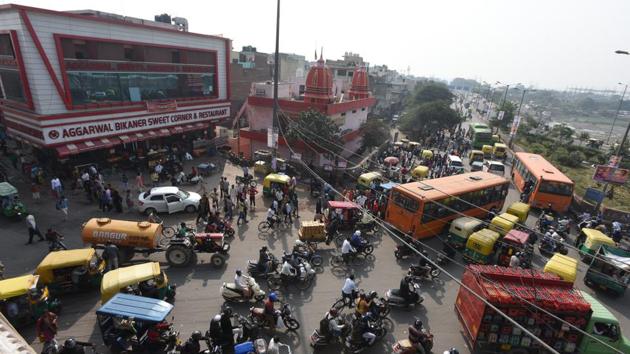Building public support for congestion pricing
Right now, Delhi’s public bus fleet size is at a nine-year low, although the government has promised to roll out 3,000 CNG-powered and 1,000 electric buses in the next couple of years.
More than a decade after it was first proposed, congestion pricing is all set to become a reality in New York City.

Last week, the New York state legislature approved the plan to charge those driving into the central business district of Manhattan from next year. A first in the United States, this congestion tax will raise funds to fix the city’s ailing subway and bus network, and “thin out streets that have become strangled by traffic”, the New York Times reported last month.
Unlike New York City’s subway, which was operationalised more than a century ago, the Delhi Metro, which began service in 2002 and is still expanding, needs no immediate resuscitation, although funds raised from a congestion tax can help prevent frequent fare hikes and pay for the last-mile connectivity service. The Delhi government could also use the extra fund to revive its depleted bus service.
But the primary motivation behind congestion pricing — making drivers pay for the congestion they cause on roads — is also about a fair deal in Delhi’s context. Vehicle registration in the national capital, which is one of the most polluted cities in the world, has already crossed the 10-million mark. Even the country’s most extensive road network cannot accommodate more.
Probably that is why Delhi’s Lieutenant Governor (L-G), last year, asked authorities to explore the possibility of imposing a congestion tax on certain stretches through an Electronic Road Pricing system that would deduct the fee when vehicles entered a highly congested zone during peak hours.
Although the idea is yet to gain political momentum, the L-G’s proposal was not new. For years, experts, government panels and Parliamentary committees have recommended congestion pricing and road space rationing for Delhi. But, there is broad agreement that it cannot be done without fixing basic connectivity.
Right now, Delhi’s public bus fleet size is at a nine-year low, although the government has promised to roll out 3,000 CNG-powered and 1,000 electric buses in the next couple of years. The national capital region (NCR) already has a 373-km Metro network but the rollout of 427 new electric buses for last mile connectivity will still take time.
In 2017, the L-G had commissioned decongesting of 77 arterials by improving road geometry, building pedestrian infrastructure and clearing them of encroachments and illegally parked cars. It is still a work in progress. To further improve pedestrian facilities, the Delhi Development Authority last month made public a policy to improve walkability that will, to start with, fix 19 key locations.
But even after the backend is fixed, how many of us will be willing to chuck our cars to take public transport or just walk to the nearest destination?
Discouraging private vehicles does not just require political courage. It also needs people’s support.
It took Singapore, which, in 1975, became the world’s first country to levy a congestion tax, a year to convince people about its benefits. Gopinath Menon, a former chief transportation engineer, had said in an email interview last year that his government tried to make the deal palatable by promising better land-use, smoother traffic, new roads and better public transportation.
Also Read | Delhi must learn decongestion from Singapore
Sweden’s Stockholm chose to demonstrate the benefits of congesting taxing by launching a seven-month trial in 2006. A year later, it made the tax permanent after a referendum approved it by a margin of 52 to 45. By 2011, public support for road pricing stood at nearly 70% and above 50% even among those who paid the fees most often, reported Streetsblog NYC.
In Beijing, authorities have dovetailed congestion pricing into the city’s low-emission zone policy to curb air pollution. In 2016, the World Resources Institute (WRI) China partnered with Beijing Jiaotong University to conduct a three-year public opinion survey with 26,000 respondents. The report published in The City Fix, a WRI blog, said that while both support for and resistance to the policy decreased, the size of the neutral middle went up.
Even as it works on public support for congestion pricing, Beijing put in place other measures. In 2011, it introduced a lottery to restrict the number of new cars. The annual quota for new vehicles fell from 240,000 in 2013 to 100,000 in 2018, a Bloomberg Businessweek report said.
Based on their licence plate number, each car has to stay off roads for one day in a week. As many residents were registering their car outside the city, from November 2019, cars without a local license plate will not be allowed to drive within the city for more than 84 days per year, the report said.
The least Delhi could do is to revive its car-free pilot project, which was launched with much fanfare in 2015 only to be abandoned too soon. As megacities make significant leaps to beat congestion, let’s take a small step in the right direction to keep the public debate going.




